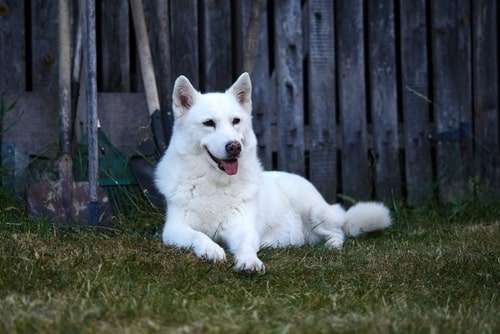What Do Therapy Dogs Actually Do?
This post was written by Canidae, the official pet food sponsor of The Alliance of Therapy Dogs. As part of their mission to spread goodness to pets and people, Canidae has donated $20,000 to shine a light on the proven benefits of animal-human connection and support the good work that ATD has already been doing for thirty years.
What Does a Therapy Dog do?
Therapy dogs are trained to provide comfort and affection to people other than their handlers or owners. That could mean visiting a variety of places where people need love and affection, such as hospitals, schools, hospices, nursing homes, disaster areas, and more. They are encouraged to interact with a variety of people and should have a friendly and warm disposition.
The exact nature of their role differs from dog to dog and from institution to institution. Some include:
Improving patients’ mental health through socialization and engagement
Giving learning disabled children the confidence to read out loud
Aiding physical rehabilitation by walking people through processes, with the aim of helping them to recover certain physical skills
The history of therapy pets can be traced back to Ancient Greece. In more recent times, Florence Nightingale put forward the concept of Animal Assisted Therapy (AAT). In Notes on Nursing, published in 1860, the “Lady with the Lamp” suggested, “a small pet is often an excellent companion for the sick” and Dr. Sigmund Freud followed this line of thought by using his dog to calm patients with anxiety.
Elaine Smith, a registered nurse who spent some time working in England, also noticed dogs helping with anxiety, and upon returning to New Jersey established the first formal training program for dogs to visit institutions.
What’s the difference between a therapy dog, a service dog, and an emotional support animal?
Pets are increasingly used to support humans through difficulties, leading to different working titles and types of assistance support. As you now know a bit about therapy dogs, we’re going to tell you about two different canine careers.
Service Dog
A service dog is individually trained to perform specific tasks for a person with a disability — as defined by the Americans with Disabilities Act (ADA), a federal law that prohibits discrimination and entrenches rights for people with disabilities.
In this way a service dog differs from a therapy dog: While therapy dogs are encouraged to work and interact with a wide variety of people, service dogs are trained to help one specific individual with a disability.
Perhaps the most well-known type of service dog is the guide dog for the visually impaired. In recent years, more and more service dogs have also been trained to detect whether the blood sugar levels of the human in their care are too low or too high, in an effort to help people with diabetes.
These are only two of many types of service dogs that help people with physical disabilities, but it is worth noting that some service dogs also help people with mental disabilities, such as anxiety disorder. For example, a service dog can be trained to bring medication and water to a person during an ongoing anxiety attack.
Unlike therapy dogs, service dogs are granted full public access rights, which means that while assisting their human companions, they can enter areas animals are usually banned from entering.
Emotional Support Animals (ESAs)
Emotional support dogs are assistance animals that help their owner’s mental health and are solely tasked with providing support and comfort to that one person.
While they may be known colloquially as comfort dogs, a prescription from a doctor or mental health professional is needed in order to register an ESA. They don’t have to undergo the same rigorous training as service dogs, but their role in providing their owner with company and reassurance is extremely important.
Like service dogs, ESAs are protected under the Federal Fair Housing Act, which means owners are allowed to live with them in rental properties that don’t usually allow pets.
Alliance of Therapy Dogs – How Your Dog Can Help
The work that service dogs and ESAs do is invaluable. But if you are interested in helping others, the easiest way for your dog to help people is by becoming a therapy dog.
While therapy dogs need certification, The Alliance of Therapy Dogs has a streamlined sign-up process that involves just five simple steps before your dog can start visiting other people and begin spreading some joy.
People often wonder what characteristics a therapy dog should have, and question which dog breeds would be best suited to this work. Well, the good news is that there is no best therapy dog; mixed-breed dogs are just as capable of qualifying as a therapy dog as border collies, Labrador retrievers, and Yorkshire terriers.
Whether you have a big or small dog, the most important thing is that your pet has a calm and gentle disposition and isn’t easily startled. He or she should be obedient and friendly, plus well-groomed and looked after.
Find By Breed Name
Explore by characteristic or group
